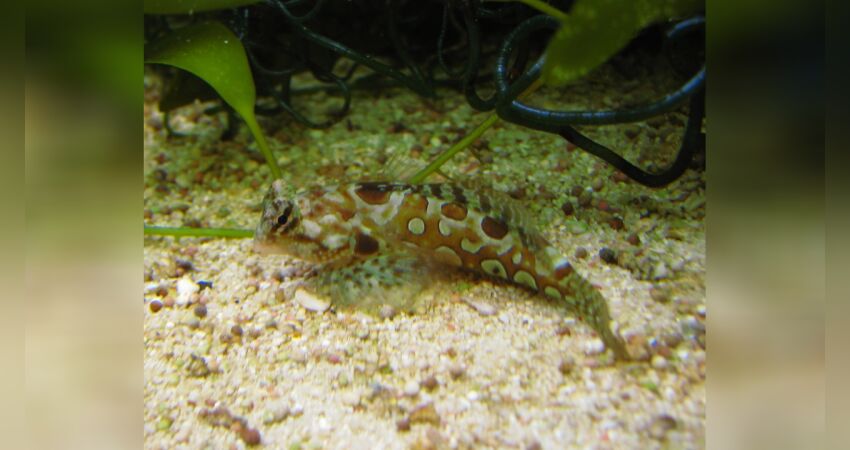DeJong Marinelife successfully breeds the rare Synchiropus circularis

Synchiropus circularis (c) by Christian Wehner
The well-known Dutch wholesaler DeJong Marinelife has successfully bred Synchiropus circularis. An accidental import of this rare species led to DeJong's spawning success. The top news :-)
Briefly described, the whole thing was quite simple. By having a female and a male animal, and apparently the right food, the whole thing succeeded in a natural way. The special thing is actually rather the point that one got specimens of the very rare Synchiropus circularis at all.
DeJong describes in detail the accidental import and the speed with which they managed to breed them in their new state-of-the-art rearing facility:
"What makes Synchiropus Circularis special is that it has a very bold pattern of well-defined circles on the sides and top of its body, similar to a green or spotted mandarin, but it has a more subdued colouration that helps it blend in with benthic encrusting organisms and corals." Algae," DeJong said.
"S. Circularis is one of those "book fish" that we have admired in pictures and from afar. This species is extremely rare and occurs only very sporadically and intermittently. In the last 10 years it has only been collected a few times in the sea . In March 2023 we were unpacking a shipment from the Philippines when two "strange" dragons caught our eye. After unpacking, it became clear that we had just unpacked two of these beautiful S. Circularis. "We were lucky because they were a male and a female."
"We transferred the fish to our quarantine breeding facility. After just a week, they started mating and spawning. We still can't believe how lucky we were. But that was not the end. We were also able to collect the first eggs and raise the larvae. It's a new species and we didn't know anything about the development of the larvae or what food they needed. So we applied the same protocols we use for breeding S. splendidus."
"The development of the larvae was the same, so we could give them the right food. The result was a small, incredibly cute, sedentary Synchiropus circularis. At the moment they are still too small to sell, but we hope to be able to offer these little guys soon and bring a new species to the market."
[image:18282]
Although described as early as 1984, the import of Synchiropus circularis was limited to only a few individuals known to us. In 2014, the Steinhart Aquarium of the California Academy of Sciences collected one species on an expedition to the Philippines, a new record for the species in the region. But as divers became more familiar with the cryptic species, they were again spotted in the Philippines and, oddly enough, even photographed by several divers performing spawning rituals with the far more popular mandarin species Synchiropus splendidus . Discussions with the fish farmer ORA at the time confirmed that their mandarins would also spawn successfully with their conspecifics, only the spawning of S.splendidus and picturatus resulted in unfertilised eggs.
How do you like this article?
Info
Author

Bookmark
Comments
Topics
Similar articles
- DeJong Marinelife successfully breeds the rare Synchiropus circularis
- Phytoplankton und Zooplankton
- Magazine: The problems with the gobies
- Reefsafe or not? The glass lizard eater Parachaetodon ocellatus
- Zebrasoma flavescens
- Amphiprion occelaris - Die Aufzucht von I. Krause
- Feeding Coral Fish Part 4
- Gerald Bassleer: Fish Diseases in the Marine Aquarium
- Eviota und Trimma - eine Bereicherung der Aquaristik
- Study of fish behaviour in the aquarium
Comments To the top
Please register
In order to be able to write something yourself, you must register in advance.






